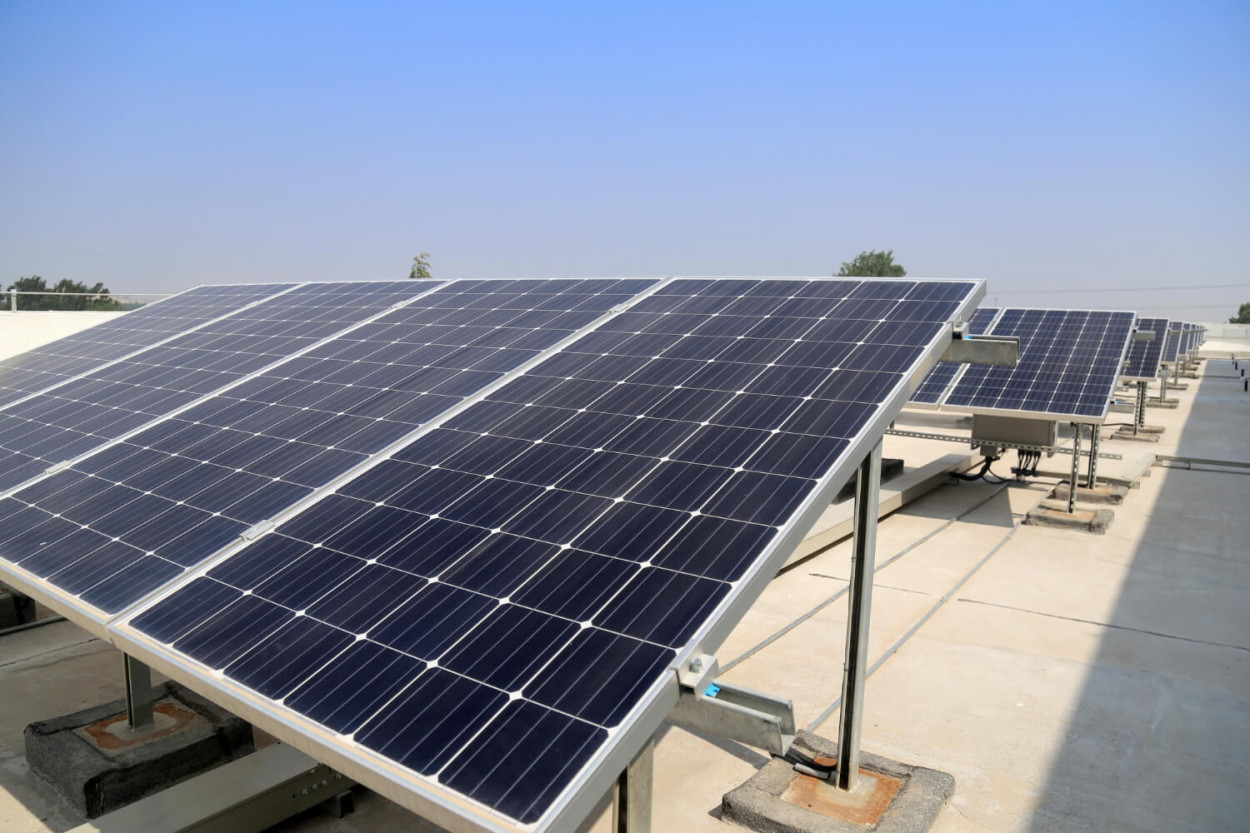0203 193 8888
0203 193 8888

Solar Panels have become increasingly popular as renewable energy solutions for homes and businesses alike. They offer a sustainable way to generate electricity and reduce reliance on traditional energy sources. But what if you have a flat-roofed property? Can you still take advantage of solar power?
The answer is yes, you can have solar panels on a flat roof. However, there are some considerations and additional equipment needed to ensure their effectiveness and longevity.
The solar panels used on flat roofs are the same as those used on pitched roofs. However, when installed flat, they might not absorb as much sunlight, and there’s a risk of water damage. To avoid these issues, a framing system is essential to tilt the panels towards the sun. This not only maximises their sun exposure but also facilitates self-cleaning during rain showers, preventing water pooling and potential damage.
Fixing panels to your home - This involves drilling into the roof and securing brackets to stabilise the mounting frame. Care must be taken to maintain the roof’s watertight integrity during installation.
Adding weight - If penetrating the roof is not an option, an alternative is to add weight to the structure. The mounting frame can be placed into concrete ballasts (heavy slabs) or specialised tubs weighted down with slabs.
Like any solar panel installation, there are advantages and disadvantages to consider when installing them on a flat roof.
To maximise energy generation and avoid water damage, flat roof solar panels should be mounted at a 20-50 degree angle. This position allows panels to absorb more sunlight and facilitates self-cleaning during rain showers. Installers typically use specialised equipment to achieve the optimal angle and ensure proper panel security.
In some cases, planning permission may be required to install solar panels on roofs, especially if the property is in a conservation area or is a listed building. It’s essential to check with the local planning authority before proceeding with the installation.
Several factors should be considered before installing solar panels on a flat roof:
Weather conditions - High winds in windy areas may require additional precautions, such as fixing panels to the roof or adding weight to them.
Cost - Flat roof solar panel installations generally cost about 20% more than pitched roof installations due to the need for extra materials and structural engineering.
Potential savings - Solar panels can lead to significant long-term savings on electricity bills and reduce the property’s carbon footprint.
Flat roofs can indeed support solar panels, making them a viable option for harnessing clean energy even in such settings. With the right framing system and mounting angle, flat roof solar panels can effectively generate electricity, saving money on energy bills and contributing to a greener environment.
If you're considering installing solar panels on your flat roof, ensure you engage qualified professionals, comply with any necessary planning permissions, and explore various mounting options to optimise the system’s efficiency and longevity. Solar energy offers a promising path towards a more sustainable future, and a flat roof shouldn’t stand in the way of embracing this green revolution.
Back to Blog